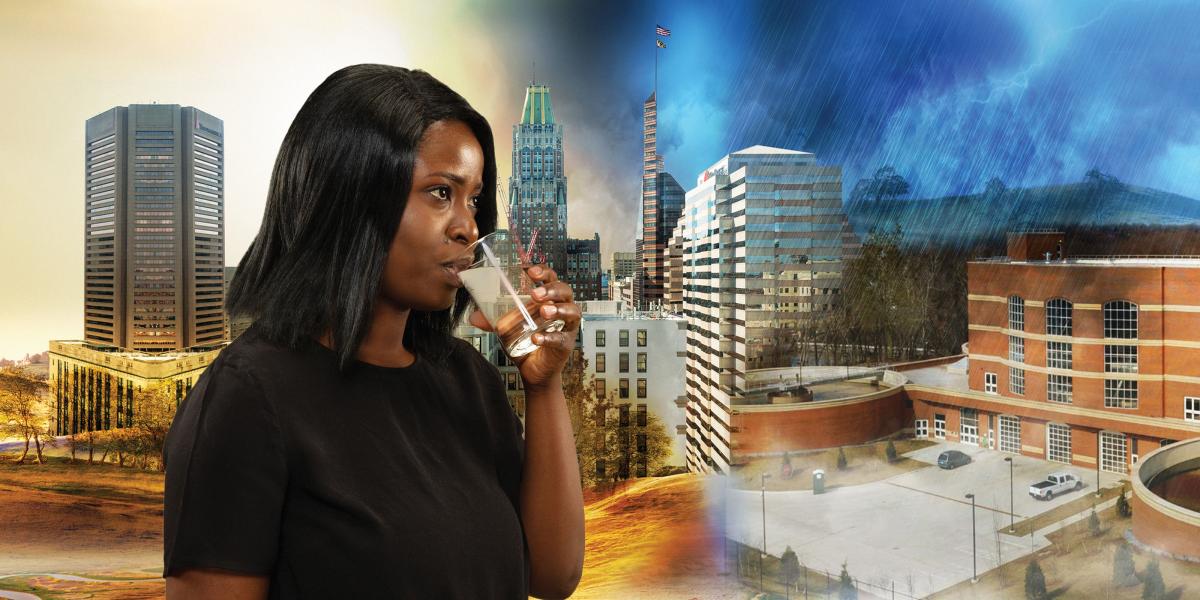Keeping Drinking Water Safe
How climate change threatens water infrastructure with twin impacts of extreme weather.
Climate change drives the water cycle to its extremes. It looks like melting glaciers and rising, churning seas—and also like tiles of desiccated soil and cracked lake beds. And one of the things it endangers is water itself: Public drinking water systems were built for previous generations’ weather.
That’s why Natalie Exum, PhD ’16, MS, an assistant scientist in Environmental Health and Engineering, is working to understand climate-related threats to Baltimore’s water infrastructure. With funding from a Bloomberg American Health Initiative Spark Award, she and Kellogg Schwab, PhD, MSPH, Abel Wolman Professor in Water and Public Health, are measuring tap water quality following extreme rainstorms. Understanding the effects of today’s storms can predict future vulnerabilities—and inform a plan for infrastructure resilience that can withstand extreme events for generations to come.
Protections on Tap
Thirsty Baltimoreans can thank Abel Wolman for their safe public drinking water. Wolman, chair of Sanitary Engineering in the schools of Engineering and Public Health from 1937 to 1962, co-developed the standard method of chlorinating municipal water supplies. He also planned the regional system that leads from protected watersheds to reservoirs that provide source water for Baltimore. Most U.S. cities don’t have this system, leaving their water supplies more susceptible to contamination following extreme weather events.
Watch
Researchers Exum and Schwab describe their work in Baltimore and how they hope it will translate to global water quality research.
